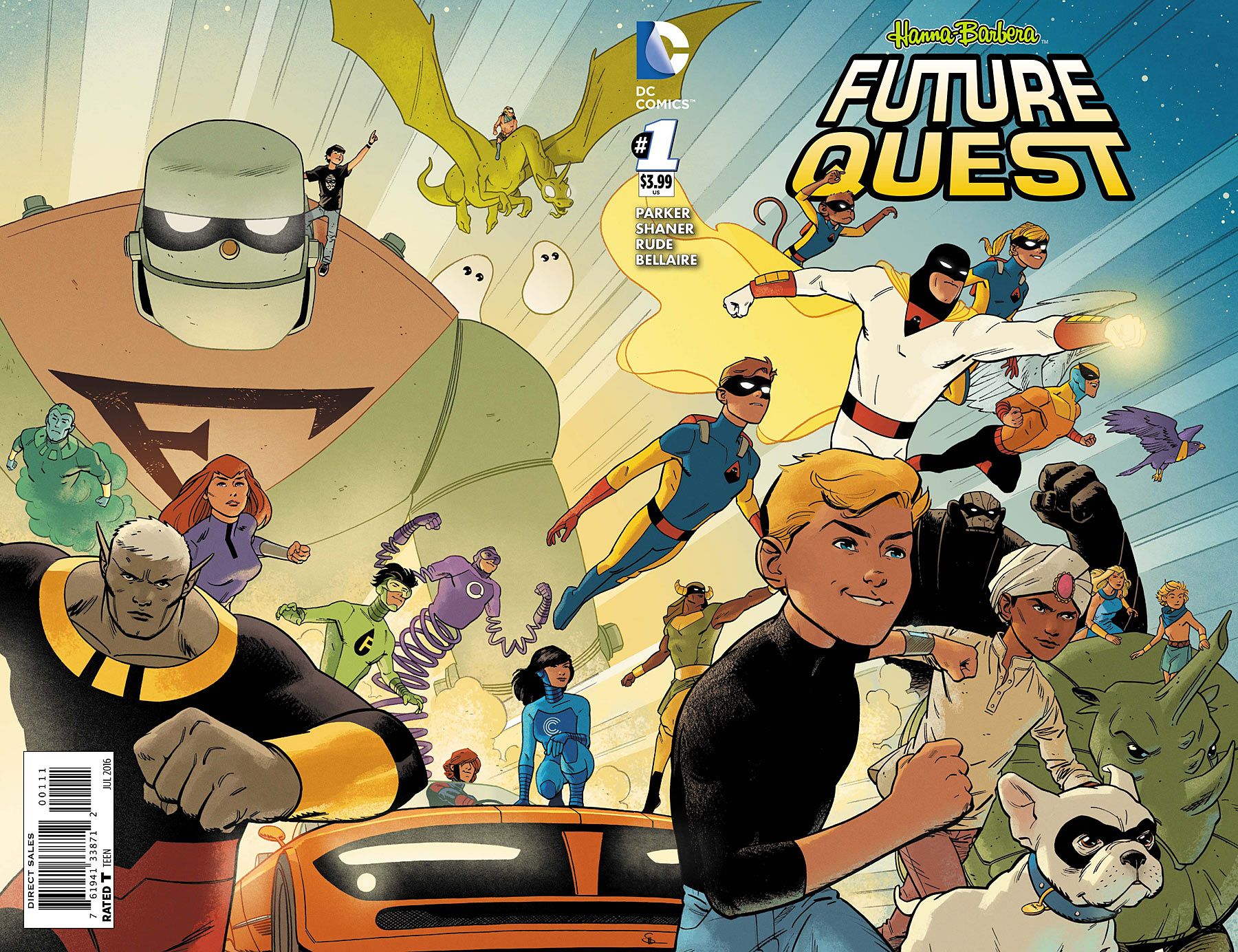Like many people, I grew up watching Hanna-Barbera animated properties, but I never would have counted myself as a fan. Considering that, the list of characters and properties Jeff Parker, Evan "Doc" Shaner and Steve Rude aimed to use in their "Future Quest" comic daunted me a bit; often, this sort of mash-up squarely and specifically targets the most rabid fans. That said, the pedigree of the creators should make those worries evaporate, because "Future Quest" #1 is a comic that works regardless of how many Hanna-Barbera cartoons you've seen.
Parker, Shaner on Why the Hanna-Barbera Wheel Doesn't Need Reinventing in DC's "Future Quest"
"Future Quest" #1 uses the "Jonny Quest" cast as its primary focus, which is a smart move right off the bat. Jonny Quest and Hadji Singh have so little in the way of baggage that it's easy to get attached to them; through context, we quickly learn what we need to know about them as well as their relationship to Dr. Quest and Race Bannon, and then the comic moves forward. In general, that's how "Future Quest" handles all of the different characters involved. While it's reasonable to assume readers might need to use the internet to look up unfamiliar characters, that's patently not the case. For example, early on, a man named Ray Randall is introduced as one of two agents meeting with Dr. Quest. If you immediately recognize him as Birdman from "Birdman and the Galaxy Trio," you'll no doubt get a little thrill at his presence, but -- if you had no idea who he was -- it doesn't matter. Parker hands us just enough information to understand why he's there, but doesn't bog us down with unnecessary details either. What's important is that the story is told well, and Parker does just that.
As for said story, it's fun and involves dimensional vortexes, kid adventurers and potential misunderstandings. In many ways, it feels like the core of a modern-day pitch for a "Challengers of the Unknown" reboot, with a cast of characters that explores the strange and bizarre even as they collide with other worlds. It's engaging, and Parker successfully mixes exposition with action in a way that keeps the book from feeling slow. Based solely on Parker's script, I'd be back for the second issue.
That said, Shaner and Rude's artwork makes this comic that much more of a good purchase. Shaner draws most of the comic and does so in his lovely, clean style. His art uses thin, graceful lines at a minimum, carving out their shapes perfectly. He makes sure Johnny and Hadji look like kids rather than shrunken down adults, even as they soar through the air. The action here works well too; when Hadji plunges toward the ground, you get a strong sense of motion and can feel the pain he and Johnny experience as they crash through foliage.
Rude steps in for eight pages, and he's such a smart choice to pair with Shaner. They both share a style that uses a minimal amount of lines, which brings a crisp look to the page, though Rude's art has a thicker, almost wetter line. The heavier ink line has its own particular attraction, as it gives characters a certain heft and makes Birdman's wings look extremely strong and powerful. While Rude was likely added due to "Future Quest" #1's oversized page count, I'd be in favor of seeing him regularly stop by to pitch in.
"Future Quest" #1 is a strong comic that will entertain new and old Hanna-Barbera fans alike. It's fun, it has a strong sense of adventure, it moves quickly and it looks great, which is exactly what a first issue should do to make sure readers return for more. Parker, Shaner and Rude hit the ground running with a comic that will hopefully get the large readership it deserves.

